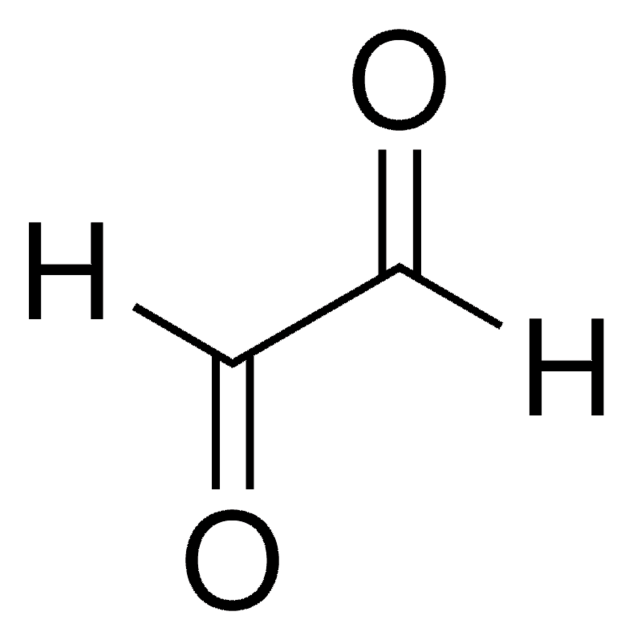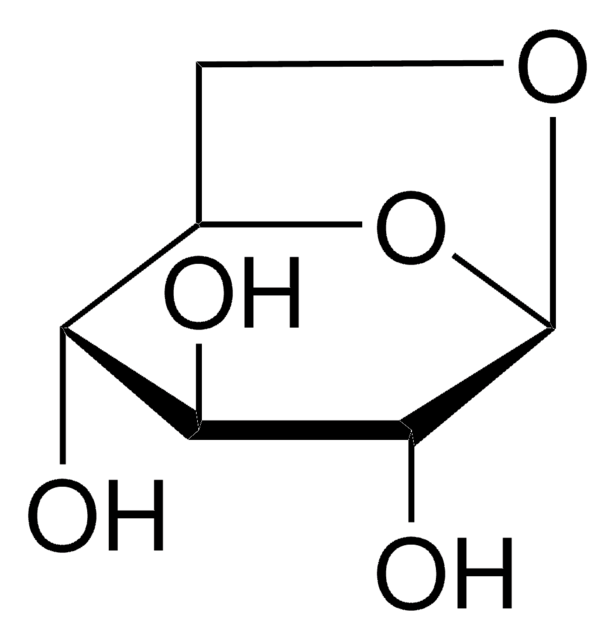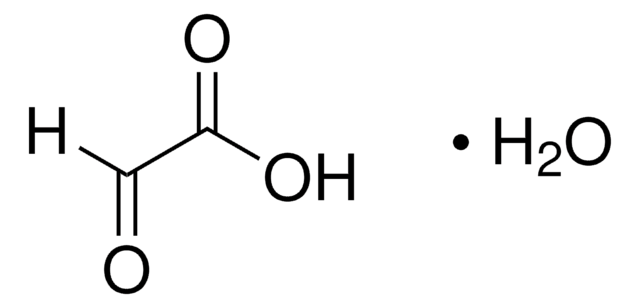61793
2-Keto-D-glucose
≥98.0% (TLC)
Sinónimos:
D-Glucosone
Iniciar sesiónpara Ver la Fijación de precios por contrato y de la organización
About This Item
Fórmula empírica (notación de Hill):
C6H10O6
Número de CAS:
Peso molecular:
178.14
MDL number:
UNSPSC Code:
12352201
PubChem Substance ID:
NACRES:
NA.25
Productos recomendados
assay
≥98.0% (TLC)
form
solid
color
white to beige
storage temp.
2-8°C
SMILES string
OC[C@@H](O)[C@@H](O)[C@H](O)C(=O)C=O
InChI
1S/C6H10O6/c7-1-3(9)5(11)6(12)4(10)2-8/h1,4-6,8,10-12H,2H2/t4-,5-,6-/m1/s1
InChI key
DCNMIDLYWOTSGK-HSUXUTPPSA-N
¿Está buscando productos similares? Visita Guía de comparación de productos
Application
2-Keto-D-glucose (D-Glucosone) is a key intermediate of a secondary metabolic pathway leading to the antibiotic cortalcerone. D-Glucosone is a substrate that may be used to identify, differentiate and characterize hexokinase(s).
Biochem/physiol Actions
2-Keto-D-glucose is the key intermediate of a secondary metabolic pathway leading to the antibiotic β-pyrone cortalcerone. This antibiotic offers protection to fungi against bacteria. The enzymatic oxidation of d-glucose by pyanose 2 oxidase results in 2-keto-D-glucose, and is considered as rare sugar.
Packaging
Bottomless glass bottle. Contents are inside inserted fused cone.
Other Notes
To gain a comprehensive understanding of our extensive range of Monosaccharides for your research, we encourage you to visit our Carbohydrates Category page.
Storage Class
11 - Combustible Solids
wgk_germany
WGK 3
flash_point_f
Not applicable
flash_point_c
Not applicable
ppe
Eyeshields, Gloves, type N95 (US)
Elija entre una de las versiones más recientes:
¿Ya tiene este producto?
Encuentre la documentación para los productos que ha comprado recientemente en la Biblioteca de documentos.
Los clientes también vieron
Cellulose Chemistry and Properties: Fibers, Nanocelluloses and Advanced Materials, 178-178 (2012)
G Treitz et al.
Journal of biotechnology, 85(3), 271-287 (2001-02-15)
The enzymatic oxidation of D-glucose to 2-keto-D-glucose (D-arabino-hexos-2-ulose, D-glucosone) is of prospective industrial interest. Pyranose oxidase (POx) from Peniphora gigantea is deactivated during the reaction. To develop a kinetic model including the main reaction and the enzyme inactivation, possible side-reactions
Torbjörn Linden et al.
Kidney international, 62(2), 697-703 (2002-07-12)
Bioincompatible glucose degradation products (GDPs) in fluids for peritoneal dialysis (PD) develop during sterilization and storage. Their biological activity has successfully been monitored through the use of various in vitro methods but their molecular and chemical nature is less well
Teruyuki Usui et al.
Bioscience, biotechnology, and biochemistry, 71(9), 2162-2168 (2007-09-11)
Glyceraldehyde (GLA) was determined in glucose degradation and glycation. GLA was detected as a decahydroacridine-1,8-dione derivative on reversed phase HPLC using cyclohexane-1,3-dione derivatizing reagent. The glucose-derived GLA level was higher than the glycation-derived GLA level, because GLA was converted to
Fungal pyranose oxidases: occurrence, properties and biotechnical applications in carbohydrate chemistry
Giffhorn F
Applied Microbiology and Biotechnology, 54(6), 727-740 (2000)
Nuestro equipo de científicos tiene experiencia en todas las áreas de investigación: Ciencias de la vida, Ciencia de los materiales, Síntesis química, Cromatografía, Analítica y muchas otras.
Póngase en contacto con el Servicio técnico








